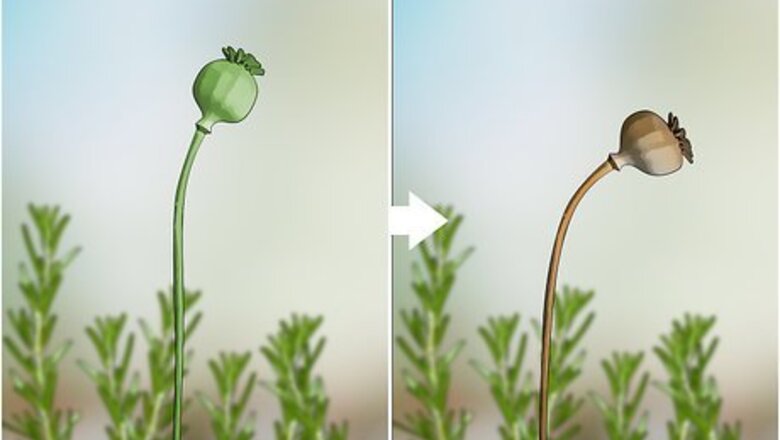
views
Harvesting Rosemary Seeds

Watch for the seed pods to form and dry out. A rosemary plant will produce flowers in spring or summer. When the flowers die back, seed pods will grow in their place. After the seed pods form, wait for them to develop and eventually dry out and turn brown. That’s when they're ready to be harvested. You can also buy rosemary seeds from nurseries and garden stores if you don’t have a plant to harvest them from.
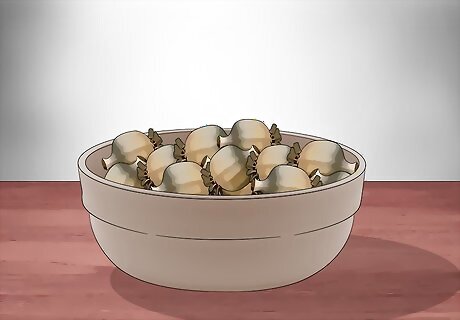
Collect the seed pods. The seed pods are very small, and you can remove them from the plant by pinching them off with your fingers. As you collect the pods, place them in a cup or small bowl to keep them all together.

Dry the pods. Bring the pods inside and transfer them to a paper bag. Leave the bag open to allow air flow. Place the bag in a warm, dry place away from direct sunlight for 1 to 2 weeks. This will give the pods and seeds time to finish drying out. The pods are dry when they're completely brown and all the moisture is gone.
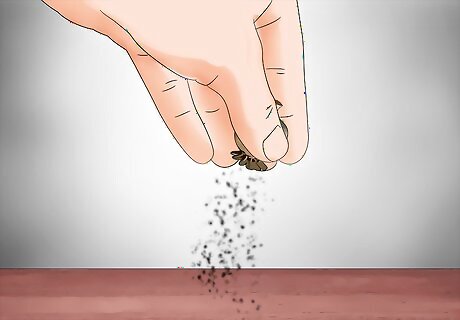
Rub the pods to remove the seeds. Place the seed pods onto a clean tea towel. Fold the towel over the pods and rub the towel between your hands to separate the seeds from the pods, and to remove any husks or flower matter. Open the towel and pick out the seeds, which are small, brown, and egg-shaped. Discard the pods and other plant matter.
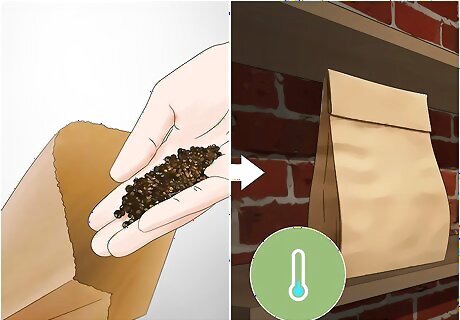
Store the seeds somewhere cool and dry. Transfer the seeds to a paper bag and seal the bag to keep the seeds inside. You can store the seeds for up to a year, as long as they stay cool and dry. A root cellar or basement is an ideal location for seed storage.
Germinating the Seeds

Aim to start the seeds in mid winter. Rosemary seeds take a long time to germinate and the seedlings are slow to grow. The seedlings can be transplanted outside in mid spring, but they need to be started inside 10 to 12 weeks before the last frost. Check local government or weather sites to find out the last expected frost date where you live.
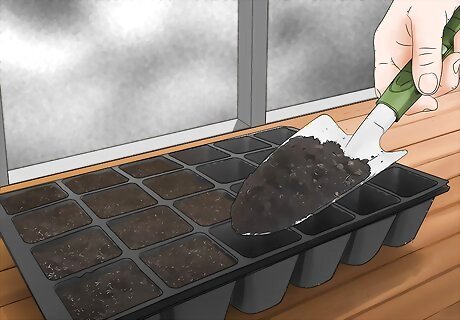
Fill seed starters with soilless potting mix. Rosemary naturally grows in sandy and rocky soil, so the seeds will do better in a loose and light potting mix that doesn’t contain soil. Good potting media for rosemary include: Sand-based mixes Vermiculite Pearlite, bark, and peat
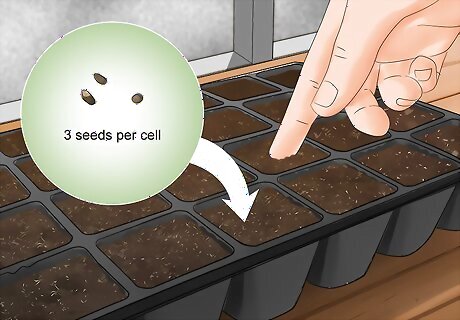
Sprinkle 3 to 4 seeds into each cell. Rosemary doesn’t have a very high germination rate, so you can increase your chances of success by planting multiple seeds in each cell. Lay the seeds on top of the potting medium without pressing them down into the soil.

Mist the seeds with water. Once you’ve place the seeds on the medium, use a spray bottle to mist the seeds with a few spritzes of water. This will help to settle the seeds in the medium and prevent them from being knocked around.
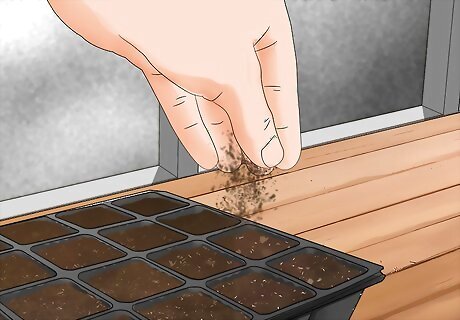
Cover the seeds with a light layer of soil. Dust a very small amount of regular potting soil over the entire surface of the growing medium to just cover the seeds. Then, mist the soil with a few more spritzes of water to dampen it. You want the soil moist but not wet.
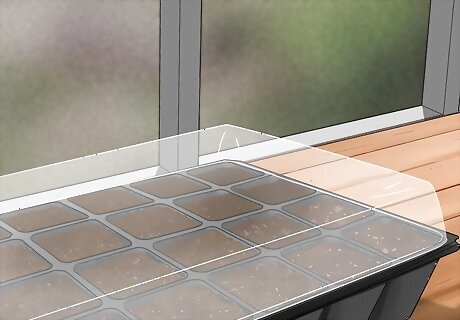
Cover the trays with plastic. You can either use plastic growing domes, or cover the tray with a layer of plastic wrap. This will keep in moisture and warmth, and help the seeds to germinate faster. Leave the plastic on the tray until the seedlings sprout and push up through the soil. Germination will take anywhere from 15 to 25 days.
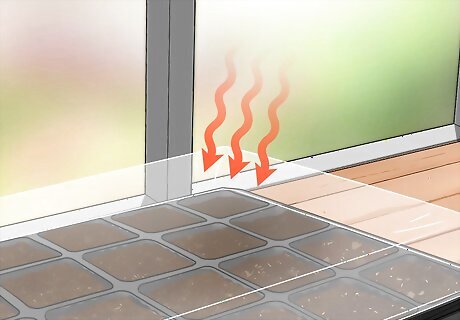
Transfer the seeds to a sunny and warm location. Rosemary seeds need both warmth and light to germinate, so it’s important to find a sunny location for the seeds. Place the seed trays in a bright location that gets direct sunlight every day. The ideal temperature for germinating rosemary is between 70 and 80 °F (21 and 27 °C). You can also place the trays on a heating mat to keep the rosemary seeds warm if you live in a cool climate or if the seeds aren't getting enough light.
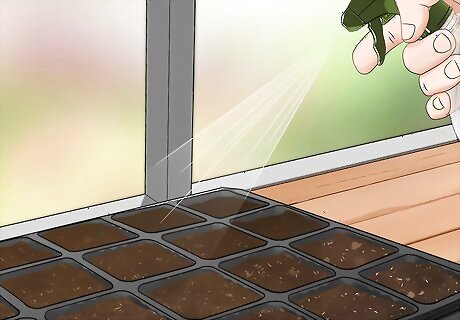
Keep the soil moist but not wet. Use the spray bottle to moisten the soil when the top starts to dry out. Rosemary is prone to a condition called damping off, which is a disease caused by fungi and mold. You can help prevent it by watering minimally.
Transplanting and Growing Rosemary
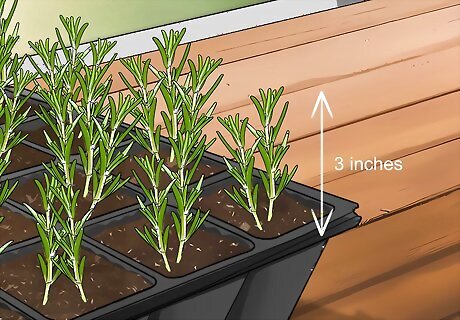
Wait for the seedlings to reach 3 inches (7.6 cm)in height. Rosemary seedlings will do best if you don’t transplant them until they're well-established, the risk of frost has past, and the ground has had time to warm up. If you started the seeds inside 10 to 12 weeks before the last frost, the rosemary should be ready to go outside in late May to early June. You can either transplant the rosemary directly to the garden, or grow it in a pot so you can bring it inside in winter.

Choose a location with full sun. Rosemary needs lots of direct sunlight to thrive. The plant will do best somewhere that gets at least 6 to 8 hours of sun every day. This is especially true if you want to grow the rosemary indoors over the winter.

Amend the soil for drainage. Before planting the rosemary, till the soil to a depth of about 12 inches (30 cm). To improve the drainage of the soil, add 3 to 4 inches (7.6 to 10.2 cm) of sand, aged compost, or rotted manure to the garden bed and till it into the soil. This is especially important if your soil has a high clay content, because rosemary needs well-draining soil.
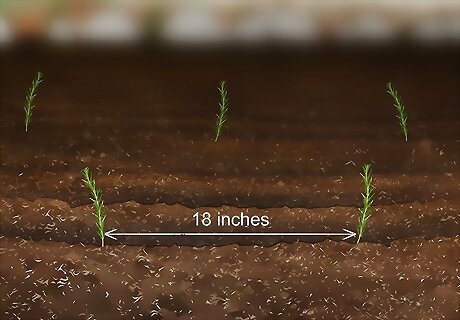
Plant the rosemary in rows. Use a spade or your hand to dig holes in the soil that are large enough to accommodate the rosemary root balls. Space the holes 18 to 24 inches (46 to 61 cm) apart. Place one rosemary plant in each hole and cover the roots with fresh soil.
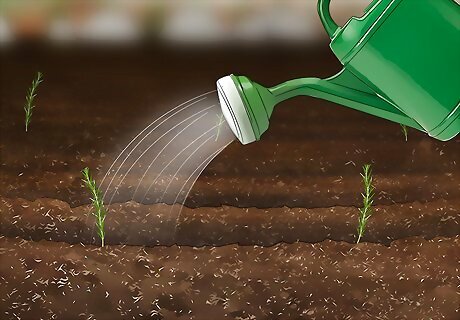
Water when the soil dries out. Rosemary is somewhat drought-resistant and doesn’t like to be overwatered. But it’s also important that the roots don’t dry out. When the top of the soil dries out, water the plant thoroughly to soak the soil and the roots.

















Comments
0 comment